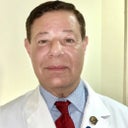Posted underEyelid Surgery q&a
Skin covering eyelid - would an upper blepharoplasty fix this? (Photo)
My right eye (left on photo) has skin covering my eyelid. Would a Upper blepharoplasty surgery fix this? And if so would I also benefit from it on my other eye?
Answers (7)
From board-certified doctors and trusted medical professionals

Dr. Lexie Wang, MD
Board Certified Facial Plastic Surgeon, Board Certified Otolaryngologist
Answer

Dr. Nelson Lee Novick, MD
Dermatologic Surgeon, Board Certified in Dermatology
Answer
More Eyelid Surgery Questions
See all Eyelid Surgery Q&AWE SEND PRETTY
EMAILS
What’s trending? Who’s turning heads? Which TikTok myths need busting? We’ve got you. No fluff, no gatekeeping—just real talk. Get our free, unfiltered newsletter.




